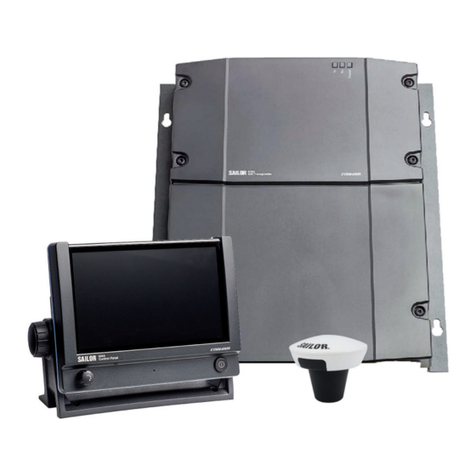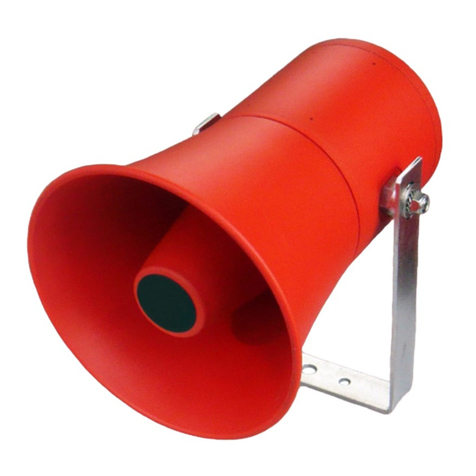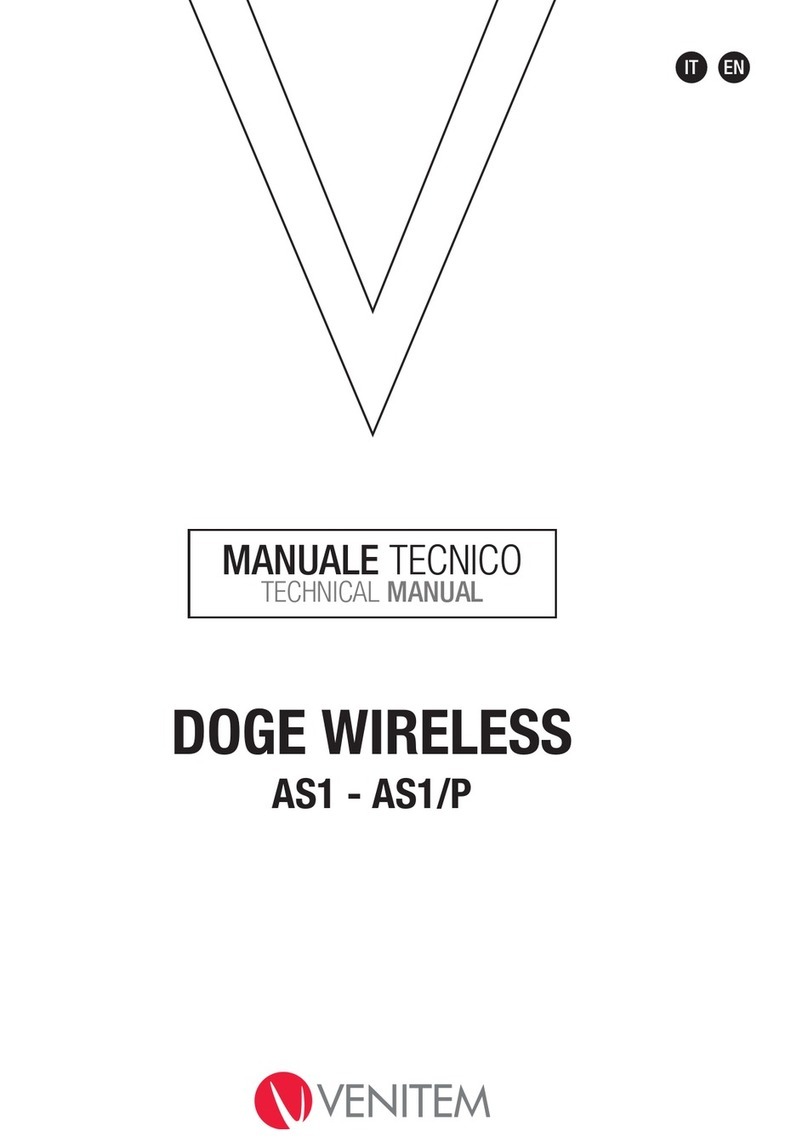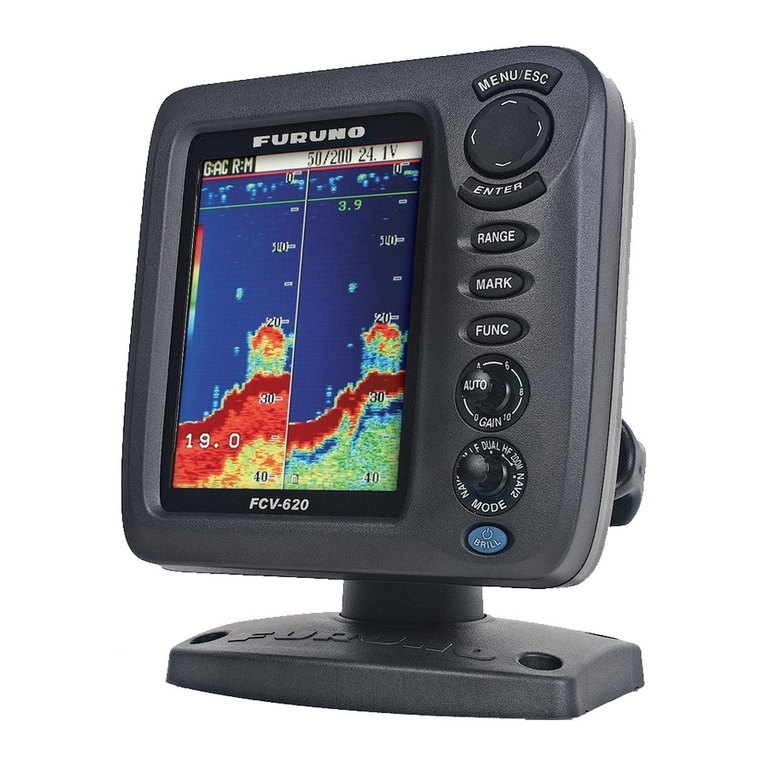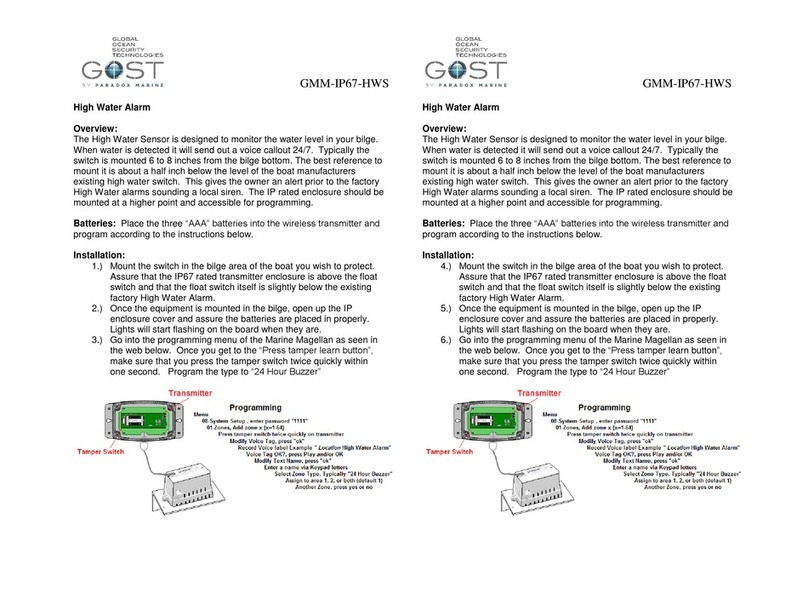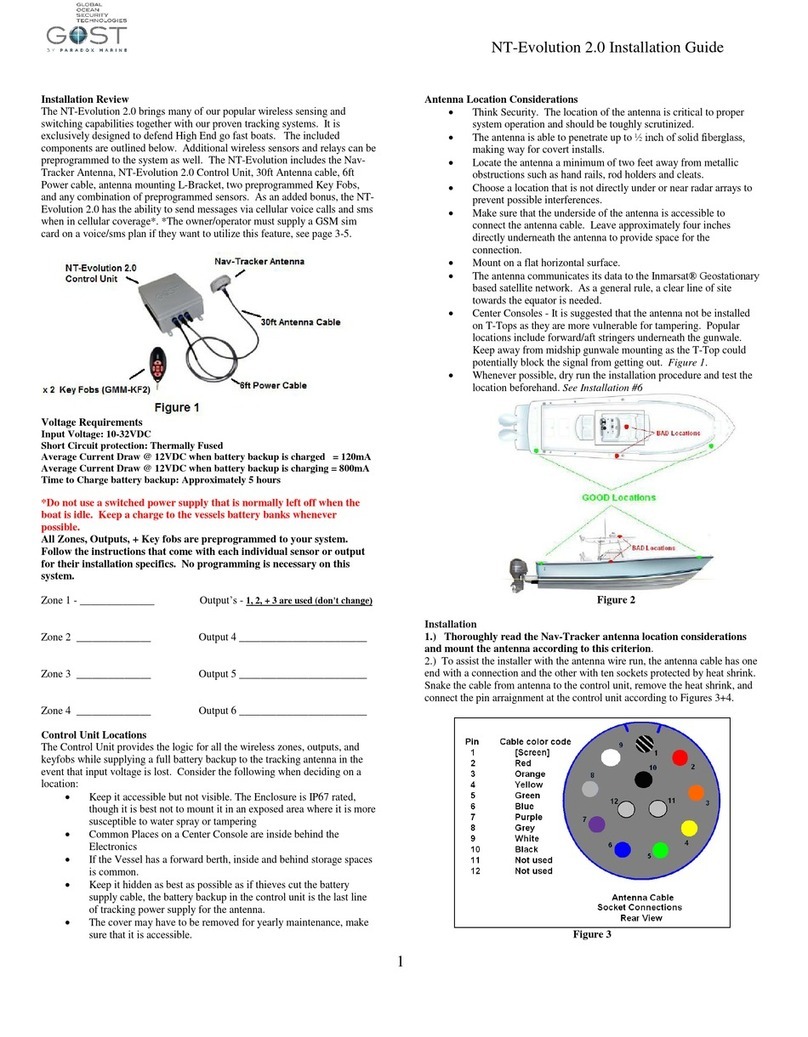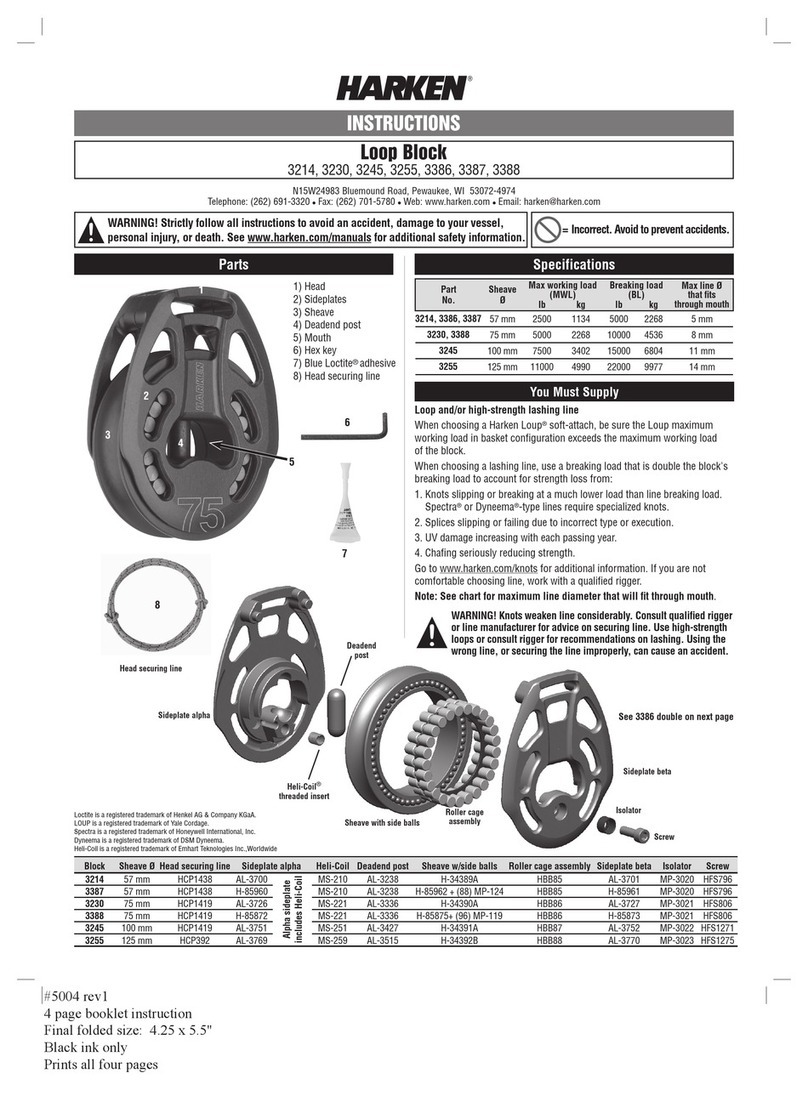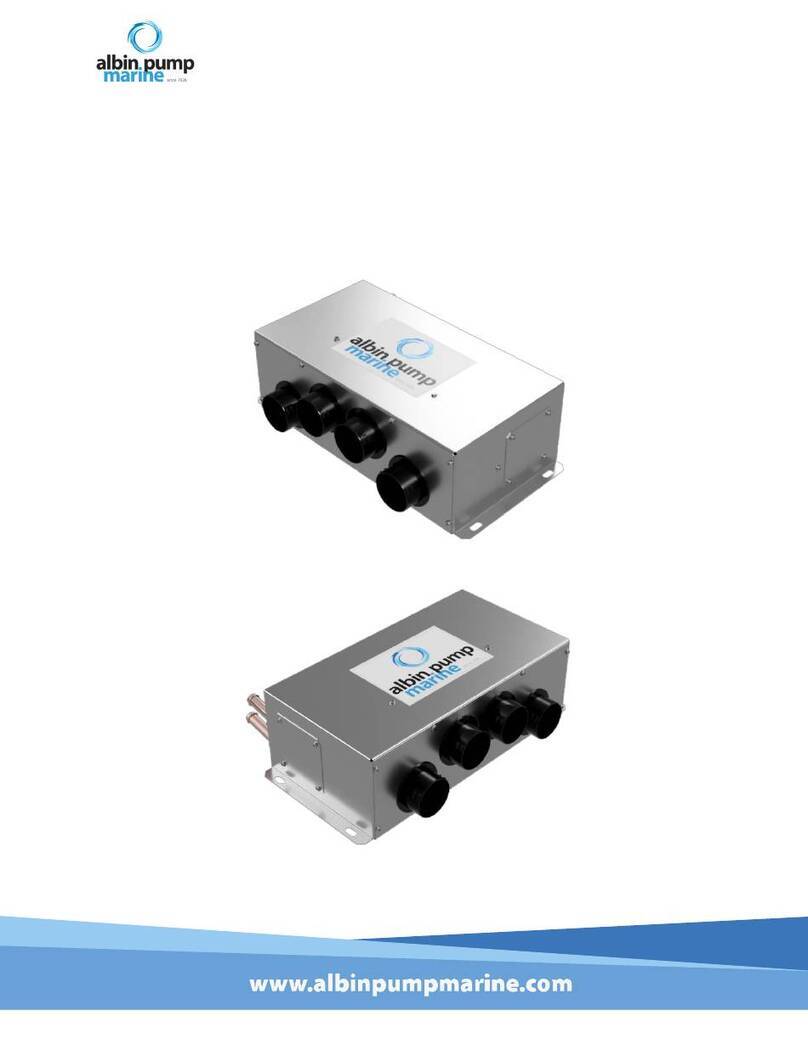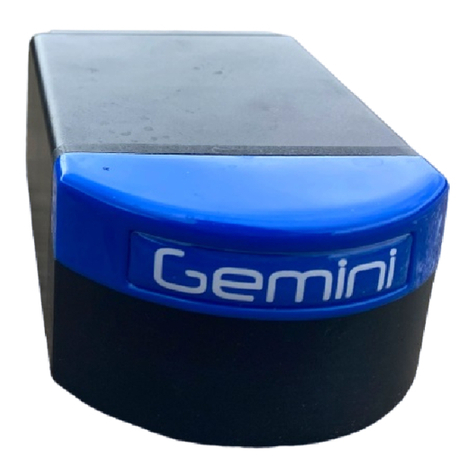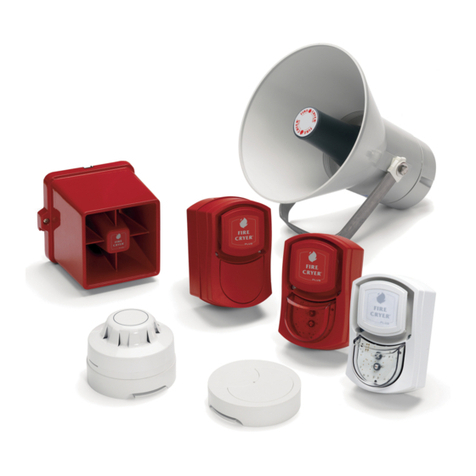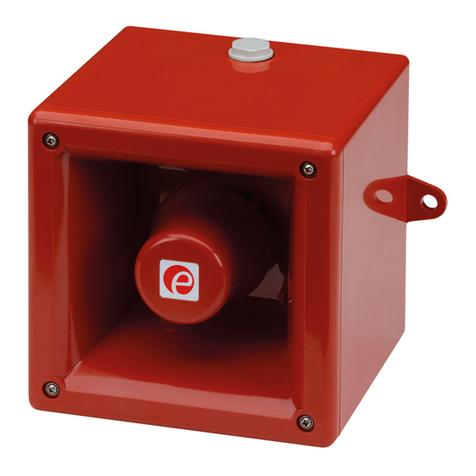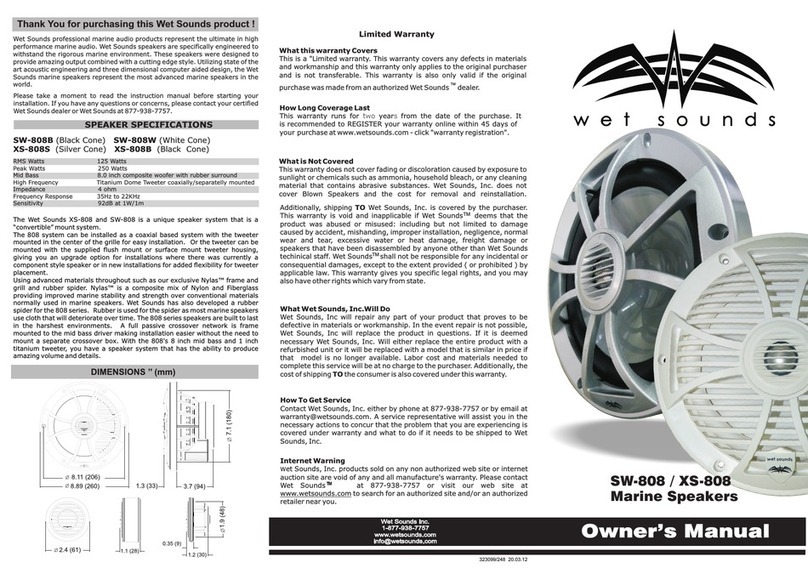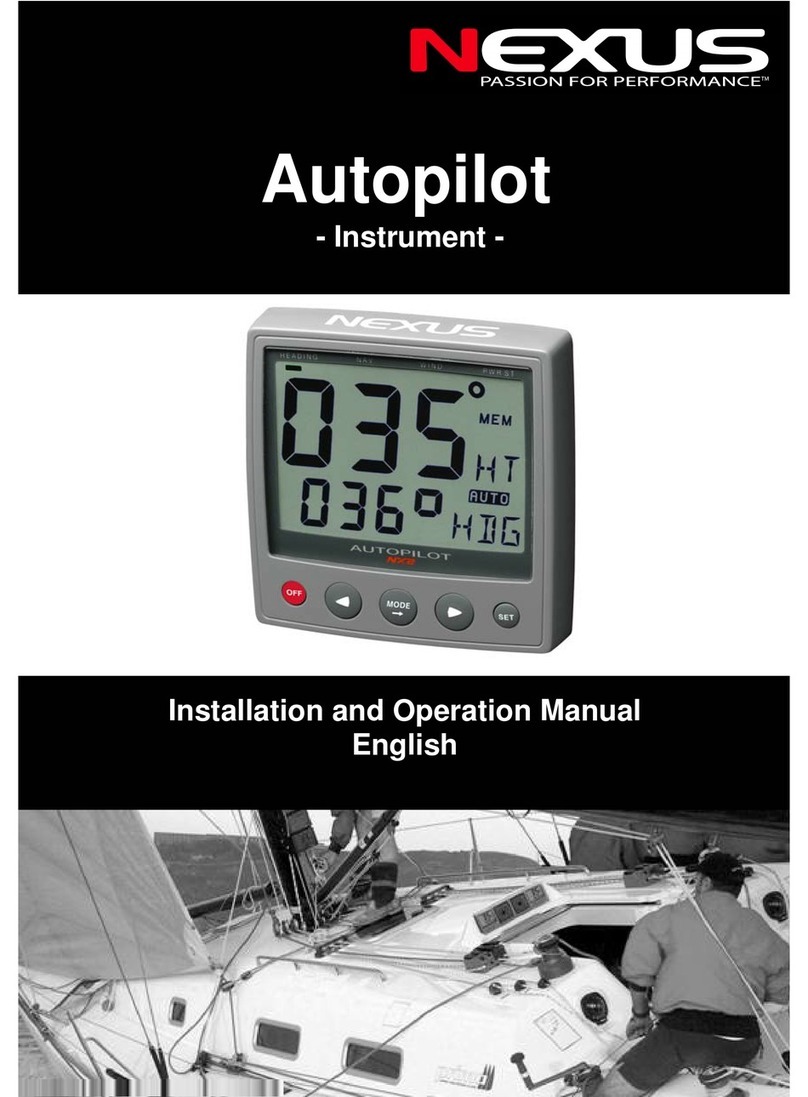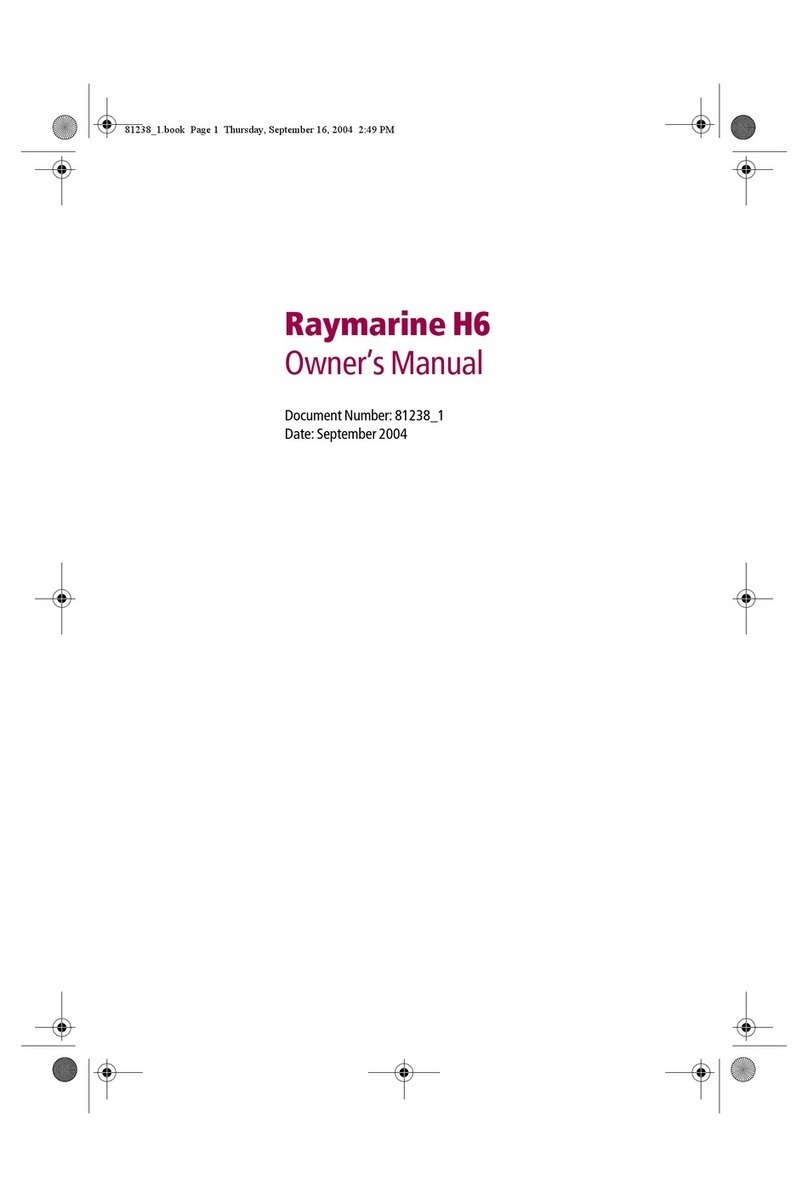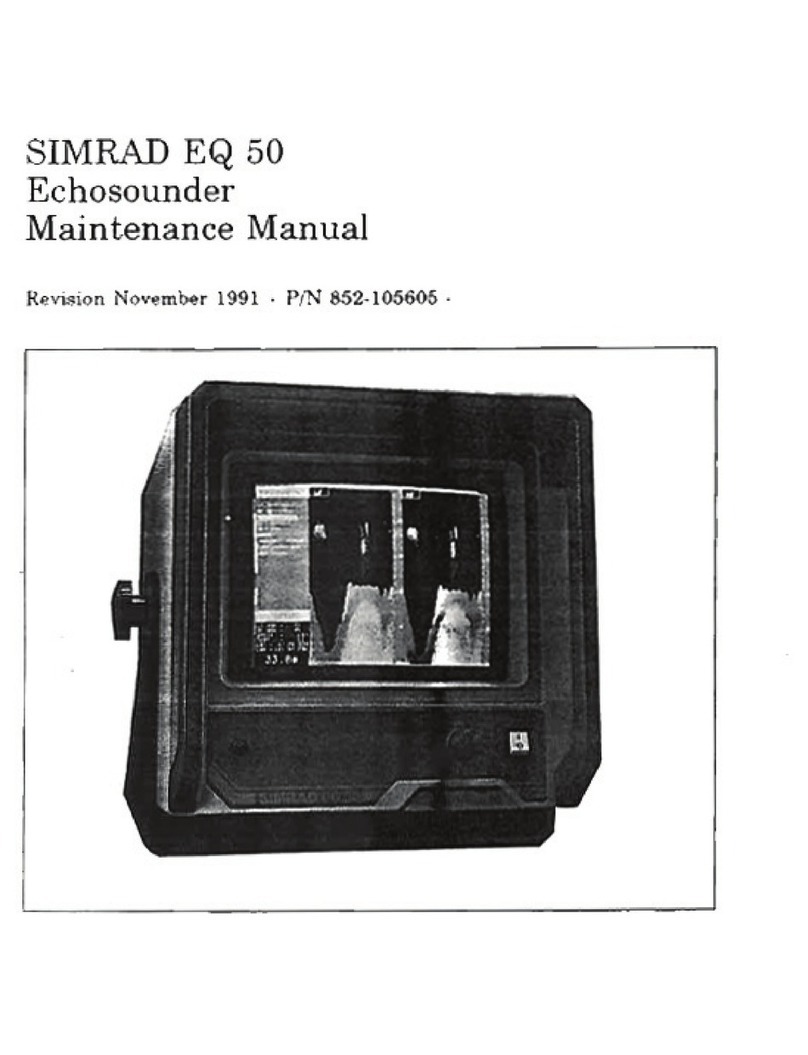
Nav-Tracker 3.0
1
Installation Review
The Nav-Tracker 3.0 system is an Inmarsat m2m battery backed security
position and alerting terminal. There are seven components to the entire
system, the Nav-Tracker antenna, antenna mounting bracket, 3.0 Control Unit,
alert push button, antenna cable, I/O Cable, and a Power Cable (Figure 1).
Follow the instructions and location suggestions off all the components
identified in this manual.
3.0 Control Unit Location
The Control Unit provides the power/ battery backup to the antenna, Input/
Output control (I/O), and power supply input. Consider the following when
deciding on a location:
Keep it accessible but not visible. The Enclosure is IP67 rated,
though it is best not to mount it in an exposed area where it is more
susceptible to water spray or tampering
Locate it where the three cables included with it can easily be run
to its location and allow space for cable plug ins on the side
identified in Figure 2
Figure 2
Nav-Tracker Antenna Location
Locate the antenna a minimum of two feet away from metallic
obstructions such as hand rails, rod holders and cleats.
Choose a location that is not directly under or near radar arrays to
prevent possible interferences.
Make sure that the underside of the antenna is accessible to
connect the antenna cable. Leave some room underneath the
antenna to provide space for the connection.
Mount on a flat horizontal surface.
The antenna communicates its data to the Inmarsat® Geostationary
based satellite network. As a general rule, a clear line of site
towards the equator is needed.
Whenever possible, dry run the installation procedure and test the
location beforehand.
Think Security. The location of the antenna is critical to proper
system operation and should be toughly scrutinized.
See installation picture on included starboard shelf and diagram of
suggested locations in Figure 3.
Figure 3
Arm/ Disarm Pushbutton
The Alert pushbutton should be located in discreet but accessible location.
This button will arm the geofence when latched in and disarm the geofence
pushed out.
Figure 4
Installation
1.) Thoroughly read the Nav-Tracker antenna, 3.0 control unit, and
Alert Pushbutton location considerations and mount the antenna
according to this criterion.
2.) To keep the antenna cable runs easier, the antenna cable has one end with
a connection and the other with ten sockets protected by heat shrink. Make
sure the end that needs to be connected at the 3.0 Control unit side. Install the
antenna in the one of the open locations suggested in Figure 3.
3.) Place the end of the antenna cable that is complete at the antenna and
run the cable from antenna to the 3.0 control unit, remove the heat shrink, and
connect the pin arraignment at the control unit according to Figures 4+5.
